Mars Curiosity rolls up to potential new meteorite
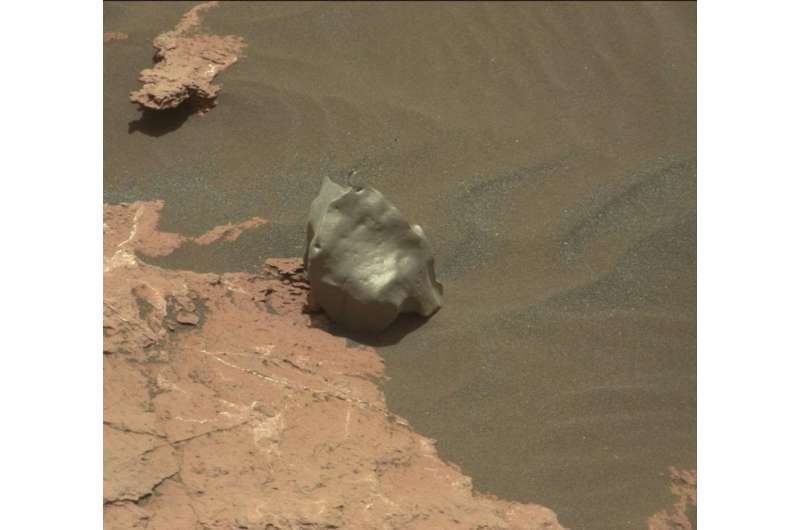
Rolling up the slopes of Mt. Sharp recently, NASA's Curiosity rover appears to have stumbled across yet another meteorite, its third since touching down nearly four and a half years ago. While not yet confirmed, the turkey-shaped object has a gray, metallic luster and a lightly-dimpled texture that hints of regmaglypts. Regmaglypts, indentations that resemble thumbprints in Play-Doh, are commonly seen in meteorites and caused by softer materials stripped from the rock's surface during the brief but intense heat and pressure of its plunge through the atmosphere.
Oddly, only one photo of the assumed meteorite shows up on the Mars raw image site. Curiosity snapped the image on Jan. 12 at 11:21 UT with its color mast camera. If you look closely at the photo a short distance above and to the right of the bright reflection a third of the way up from the bottom of the rock, you'll spy three shiny spots in a row. Hmmm. Looks like it got zapped by Curiosity's ChemCam laser. The rover fires a laser which vaporizes part of the meteorite's surface while a spectrometer analyzes the resulting cloud of plasma to determine its composition. The mirror-like shimmer of the spots is further evidence that the gray lump is an iron-nickel meteorite.
Curiosity has driven more than 9.3 miles (15 km) since landing inside Mars' Gale Crater in August 2012. It spent last summer and part of fall in a New Mexican-like landscape of scenic mesas and buttes called "Murray Buttes." It's since departed and continues to climb to sequentially higher and younger layers of the lower part of Mt. Sharp to investigate additional rocks. Scientists hope to create a timeline of how the region's climate changed from an ancient freshwater lake environment with conditions favorable for microbial life (if such ever evolved) to today's windswept, frigid desert.
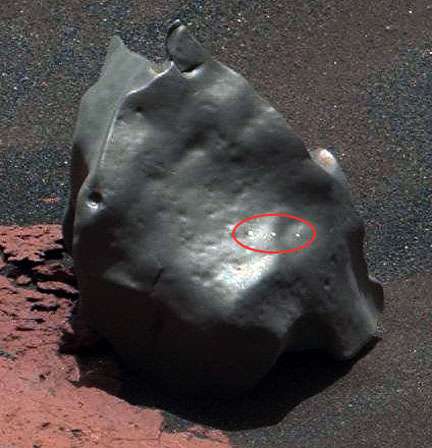
Assuming the examination of the rock proves a metallic composition, this new rock would be the eighth discovered by our roving machines. All of them have been irons despite the fact that at least on Earth, iron meteorites are rather rare. About 95 percent of all found or seen-to-fall meteorites are the stony variety (mostly chondrites), 4.4 percent are irons and 1 percent stony-irons.
NASA's Opportunity rover found five metal meteorites, and Curiosity's rumbled by its first find, a honking hunk of metallic gorgeousness named Lebanon, in May 2014. If this were Earth, the new meteorite's smooth, shiny texture would indicate a relatively recent fall, but who's to say how long it's been sitting on Mars. The planet's not without erosion from wind and temperature changes, but it lacks the oxygen and water that would really eat into an iron-nickel specimen like this one. Still, the new find looks polished to my eye, possibly smoothed by wind-whipped sand grains during the countless Martian dust storms that have raged over the eons.
Why no large stony meteorites have yet to be been found on Mars is puzzling. They should be far more common; like irons, stonies would also display beautiful thumprinting and dark fusion crust to boot. Maybe they simply blend in too well with all the other rocks littering the Martian landscape. Or perhaps they erode more quickly on Mars than the metal variety.
Every time a meteorite turns up on Mars in images taken by the rovers, I get a kick out of how our planet and the Red One not only share water, ice and wind but also getting whacked by space rocks.
-
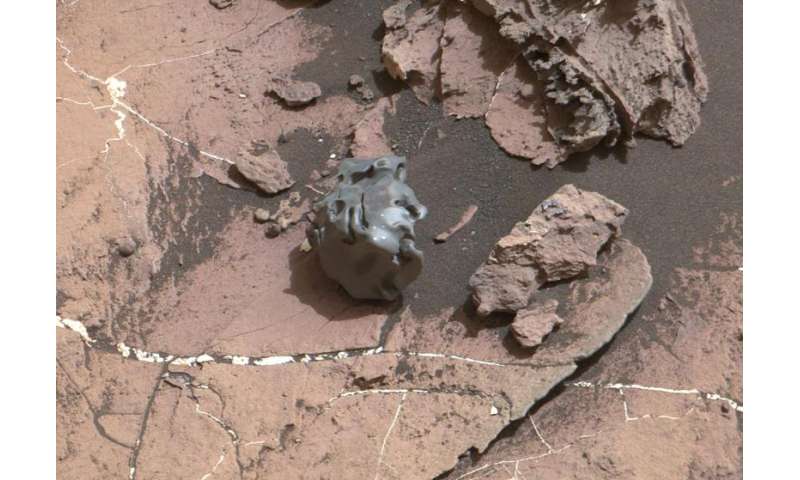
Meet Egg Rock, another iron-nickel meteorite and Curiosity’s second meteorite find. The white spots/holes are where the object was zapped by the rover’s laser to determine its composition. The rover spotted Egg Rock (about the size of a golfball) on Oct. 27, 2016. Credit: NASA/JPL-Caltech -
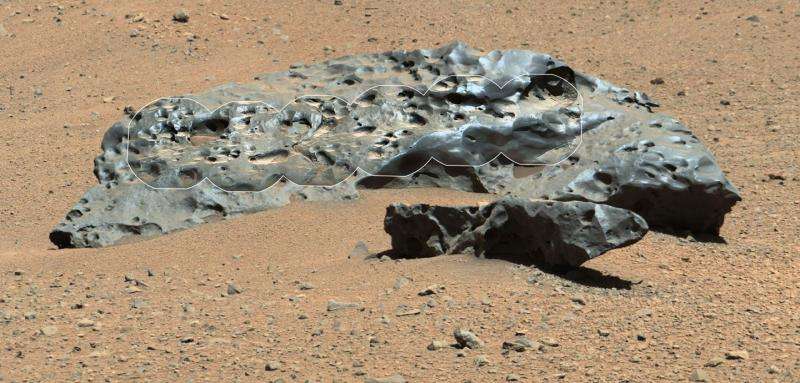
Curiosity found this iron meteorite called “Lebanon” back in 2014. It’s about two yards or two meters wide (left to right). The smaller piece in the foreground is named “Lebanon B. This photo combines a series of high-resolution circular images across the middle taken by the Remote Micro-Imager (RMI) with a MastCam image. Credit: NASA/JPL-Caltech/LANL/CNES/IRAP/LPGNantes/CNRS/IAS/MSSS -
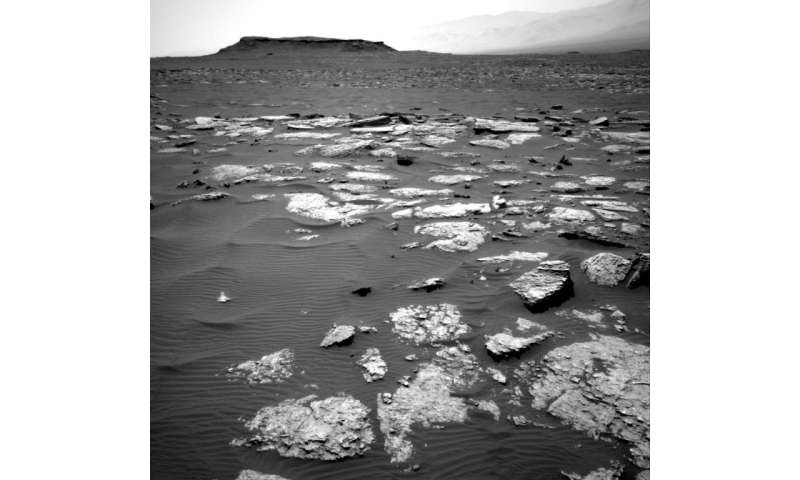
Curiosity really knows how to put you on Mars. This view of exposed bedrock and dark sands was taken by the rover’s navigation camera on Friday, Jan. 13. Credit: NASA/JPL-Caltech/MSSS
Source: Universe Today





















